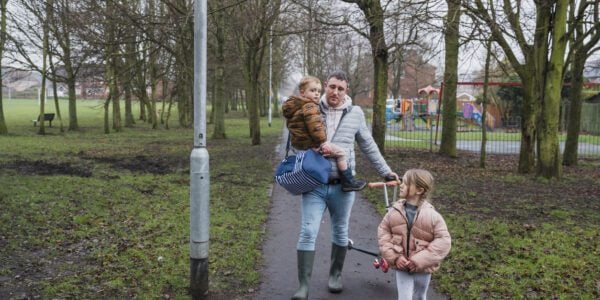A £36k lifetime cap on care costs for older people would cost £3.6 billion by 2035. Rolling out a minimum level of social care to all older people with high needs and limited resources would cost a similar amount, according to new research from the CASPeR research team.
A new Nuffield-funded report published today reveals the costs and trade-offs of reforming long-term care funding for older people in England, and identifies those who stand to gain and lose from a range of proposed reforms. It comes ahead of an eagerly-awaited Government Green Paper on Social Care.
In 2011, the Dilnot Commission found people with similar needs were getting “very different” levels of support and recommended a cap of £35k on the amount an individual must pay for their own care costs during their lifetime.
The new research shows that such a cap would cost about £3.6 billion by 2035, in today’s prices. And ensuring a minimum level of social care for all older people with high needs and limited resources would cost a similar amount.
Professor Ruth Hancock, from the Health Economics Group at the University of East Anglia, said:
“There have been big questions about whether people should have to use all theirsavings to pay for care in old age, or whether local authorities should be given funds to ensure that a minimum level of care is available to all those in high need – even if individuals have to contribute something towards that care.
“Our research estimates the current and projected care costs across a range of potential reforms. We have also identified trade-offs – in terms of protecting the savings of those who currently pay for all their care themselves and easing the means tests, for example for people who get some help with their carehome’s fee but typically have to handover nearly all their income to their Local Authority as a contribution.”
The report reveals that easing the means test would enable some people, who currently fund their own care because of their savings or incomes, to receive publicly funded care.
Meanwhile funding care for a greater number of older people would enable those with high needs and limited resources, who may currently rely on unpaid care, to receive publicly funded care.
The research also shows that extending social care to all older people with at least moderate needs and limited resources would cost £5.8 billion by 2035. This would enable some of those whose needs are not currently deemed high enough to receive publicly funded care to do so in future.
For a similar cost, free personal care could be provided to all older people in England. This would enable those with substantial needs who currently fund their own care because of their savings or incomes to receive publicly funded care.
The proposed reforms investigated include previous plans for a £72k lifetime cap on care costs which had been due to be implemented in 2020, suggestions for a cap on care costs which covers daily living costs in care homes as well as care costs, free personal care as implemented in Scotland and the Conservative Party manifesto suggestion of including housing wealth in the means test for home care.
The research has been carried out by the CASPeR team which comprises members from the Pension Policy Institute, the London School of Economics and Political Science and the University of East Anglia.
Raphael Wittenberg, from the Personal Social Services Research Unit at LSE, said:
“How best to reform the system of financing social care has proved a challenge for successive governments.
“There are difficult trade-offs to address. How far should additional resources be focused on relaxing the means test to help people with substantial care needs who because of the means test currently fund their own care? And how far should they be focused on people with limited resources who currently do not receive publicly funded care because their needs are not assessed as sufficiently substantial to meet the eligibility criteria? In order to inform decisions we have examined in detail the likely impacts of a range of potential reforms.”





















































